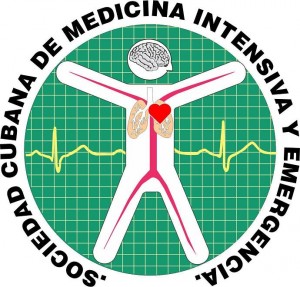Clinical characteristics for venous thromboembolism disease in emergency departments before and during the COVID-19 pandemic period
Keywords:
venous thromboembolism, pulmonary embolism, venous thrombosis, coronavirus infectionsAbstract
Introduction: There are several studies that point to the association among patients hospitalized with COVID-19 and venous thromboembolic disease.
Objective: To evaluate the risk factors and sex differences for venous thromboembolism disease (VTED), diagnosed in hospital emergency departments, and the incidence before and during COVID-19 period.
Methods: a retrospective, observational study population of patients attended in the emergency department of our hospitals and diagnosed with VTED from 1 january of 2018 to 28 february of 2021.
Results: From a total of 698652 patients during the inclusión period, 3425 (0,5%) of them were diagnosed with VTED. In all 43,62% had pulmonary embolism (PE), and 56,38% deep venous thrombosis (DVT). The incidence rate were 445 per 100000 patients-year in 2019, 467 in 2020 and 474 in 2021. Mean age was 67,6 years and 50,5% were men. In our study VTED was more frequent in men, except in younger and older patients. The most important risk factors for VTED were age and previus VTE. In women we added the severe left ventricular dysfunction and in men the ventricular tachycardia. The most frequent symptom of PE was dyspnea whereas in DVT, the most common symptom was an increase in limb diameter. In-emergency department mortality was 0,05% for DTV and 1,74% for PE.
Conclusions: the COVID-19 pandemic period is associated with an increasing incidence of patients with VTED. It´s more frequent in older patients and with previus VTE.
Downloads
References
1. Heit JA, Silverstein MD, Mohr DN, Petterson TM, Lohse CM, O’Fallon WM. The epidemiology of venous thromboembolism in the community. Thromb Haemost 2001; 86: 452-463.
2. Ascari E, Siragusa S, Piovela F. The epidemiology of deep vein thrombosis and pulmonary embolism. Haematologica 1995; 80 (Supl. 2): 36-41.
3. Echegaray M, Alonso J, Aránzazu M, Abínzano M, Gonzalez C, Solano M. Tromboembolismo pulmonar: evolución a largo plazo y epidemilogía clínica. An Med Interna (Madrid) 2003; 20: 451-456.
4. Carriel Mancilla J, Jiménez Hernández S, Martín-Sánchez FJ, Jiménez D, Lecumberri R, Alonso Valle H, Beddar Chaib F, Ruiz-Artacho P; Grupo de Enfermedad Tromboembólica Venosa de la Sociedad Española de Medicina de Urgencias y Emergencias (ETV-SEMES). Profiles of patients with venous thromboembolic disease in the emergency department and their medium-term prognosis: data from the ESPHERIA registry. Emergencias. 2021 Abr;33(2):107-114.
5. Germini, F., Zarabi, S., Eventov, M., Turcotte, M., Li, M., & de Wit, K. (2021). Pulmonary embolism prevalence among emergency department cohorts: A systematic review and meta-analysis by country of study. Journal of thrombosis and haemostasis : JTH, 19(1), 173–185.
6. Schmid-Schönbein GW, Takase S, Bergan JJ. New advances in the understanding of the pathophysiology of chronic venous insufficiency. Angiology 2001; 52: S 27-S 28.
7. Geerts WH, Heit JA, Clagget GP, Pineo GF, Colwell CW, Anderson FA Jr. Prevention of venous thromboembolism. Chest 2001; 119 (Supl. 1): 132 S-175 S.
8. Nápoles Méndez Danilo, Couto Núñez Dayana. Use of risk factors and clinical predictive models for the diagnosis of the venous thromboembolic disease. MEDISAN [Internet]. 2015 Ene [citado 2021 Mayo 10] ; 19( 1 ): 88-101.
9. Rosendaal FR. Risk factors for venous thrombosis: prevalence, risk, and interaction. Semin Hematol 1997; 34: 171-187.
10. Wells PS, Ginsberg JS, Anderson DR, Kearon C, Gent M, Turpie AG, et al. Use of a clinical model for safe management of patients with suspected pulmonary embolism. Ann Intern Med 1998; 129: 997-1005.
11. Germini, F., Zarabi, S., Eventov, M., Turcotte, M., Li, M., & de Wit, K. (2021). Pulmonary embolism prevalence among emergency department cohorts: A systematic review and meta-analysis by country of study. Journal of thrombosis and haemostasis : JTH, 19(1), 173–185.
12. Freund, Y., Drogrey, M., Cachanado, M., & Bloom, B. (2020). Re: Prevalence of Pulmonary Embolism in ED patients with Suspected COVID-19: The Truth Remains Unknown. Academic emergency medicine : official journal of the Society for Academic Emergency Medicine, 27(11), 1218.
13. Watchmaker, J. M., Goldman, D. T., Lee, J. Y., Choi, S., Mills, A. C., Toussie, D., Finkelstein, M., Sher, A. R., Jacobi, A. H., Bernheim, A. M., Chung, M. S., Eber, C. D., & Lookstein, R. A. (2020). Increased Incidence of Acute Pulmonary Embolism in Emergency Department Patients During the COVID-19 Pandemic. Academic emergency medicine : official journal of the Society for Academic E
14. Freund, Y., Drogrey, M., Miró, Ò., Marra, A., Féral-Pierssens, A. L., Penaloza, A., et al. Association Between Pulmonary Embolism and COVID-19 in Emergency Department Patients Undergoing Computed Tomography Pulmonary Angiogram: The PEPCOV International Retrospective Study. Academic emergency medicine : official journal of the Society for Academic Emergency Medicine, 27(9), 811–820.
15. Sohrabi C, Alsafi Z, O`Neil N, Khan M, Kerwan A, Al-Jabir A, et al. World Health Organization declares global emergency: A review of the 2019 novel coronavirus (COVID-19). Int J Surg. 2020; 76:71-76.
16. McLendon, K., Goyal, A., Bansal, P., & Attia, M. (2020). Deep Venous Thrombosis Risk Factors. In StatPearls. StatPearls Publishing.
17. Alegra A, Innao V, Allegra AG, Musolino C. Coagulopathy and thromboembolic events in patients with SARS-CoV-2 infection: pathogenesis and management strategies. Ann Hematol. 2020; 99(9):1953-1965.
18. Fauvel CH, Weizman O, Trimaille A, Mika D, Pommier T, Pace N, et al. Pulmonary embolism in COVID-19 patients: a French multicentre cohort study. Eur Heart J. 2020; 41(32):3058-3068.
19. Henriet J. P. (1992). La douleur dans les thromboses veineuses des membres inferieurs [Pain in venous thrombosis of the leg]. Phlebologie, 45(1), 67–77.
20. Masotti L, Ray P, Righini M, Le Gal G, Antonelli F, Landini G, Cappelli R, Prisco D, Rottoli P. Pulmonary embolism in the elderly: a review on clinical, instrumental and laboratory presentation. Vasc Health Risk Manag. 2008;4(3):629-36. doi: 10.2147/vhrm.s2605. PMID: 18827912; PMCID: PMC2515422.






